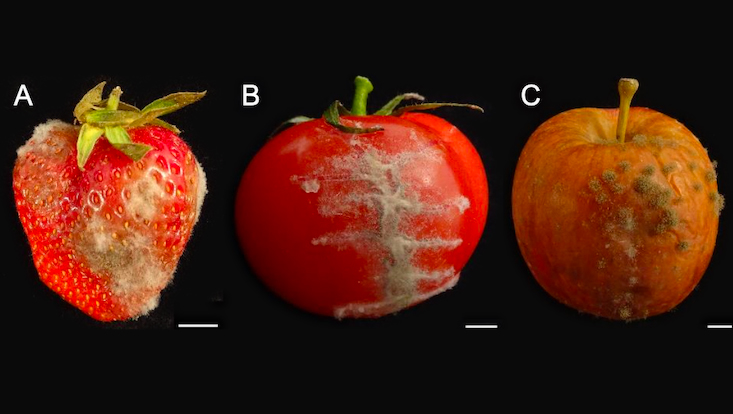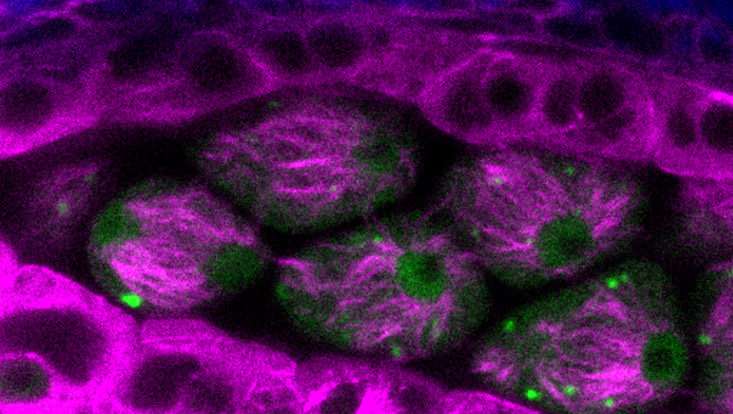How fungal Argonaute proteins control plant infection
6. Mai 2025, von Website Team Biologie

Foto: Weiberg lab
Botrytis cinerea is a fungal pathogen that infects more than 1,400 different plant species and causes the grey mold disease in many important crops. In a new study published in PNAS, the Weiberg lab (currently moving from the LMU Munich to the University of Hamburg, Departement of Biology) revealed how RNA-binding proteins of the Argonaute family control host infection. Providing these new mechanistic insights promises to develop new RNA-based crop protection strategies.
Argonautes belong to a well-known class of proteins that bind to small RNA to induce so called “RNA interference (RNAi)”, a conserved gene regulatory mechanism existing in animals, plants and fungi.
Botrytis cinerea is a destructive fungal plant pathogen that infects more than 1,400 different plant species and causes the grey mold disease in many economically important crops. As an infection strategy, Botrytis secretes extracellular small RNAs into plants that hijack the plant’s own Argonaute protein and manipulate host immunity; a mechanism known as cross-kingdom RNAi. However, the role of the pathogen Argonaute proteins in plant infection remained unexplored.
In a new study, published in PNAS, the team of Arne Weiberg has revealed how the Argonaute proteins of Botrytis control host infection in bidirectional ways. Herein, a novel green fluorescence protein (GFP) reporter system was established in plants to monitor the small RNA transfer from the fungus into the plant via life cell imaging technologies. Using this new reporter system, the researchers observed that fungal Argonautes are required for small RNA production and delivery into plant cells.
In the opposed direction, plants like tomato also send small RNAs into the infecting fungus, approving small RNA communication in this plant-fungus interaction is bidirectional. The researcher team used a technique called Argonaute co-immuno-purification coupled to small RNA sequencing (co-IP sRNA-seq) to identify hundreds of tomato small RNAs invading the fungal Argonaute proteins. Some of these tomato small RNAs have the potential to suppress fungal genes that makes the pathogen less successful in host colonization.
Providing these new mechanistic insights of fungal-plant RNA communication promises to develop novel Argonaute-based crop protection strategies.
Picture: Botrytis grey mold infection of fruits
Contact: Prof. Dr. Arne Weiberg(arne.weiberg"AT"uni-hamburg.de)
Original Publikation
Fungal Argonaute proteins act in bidirectional cross-kingdom RNA interference during plant infection
April 23, 2025


